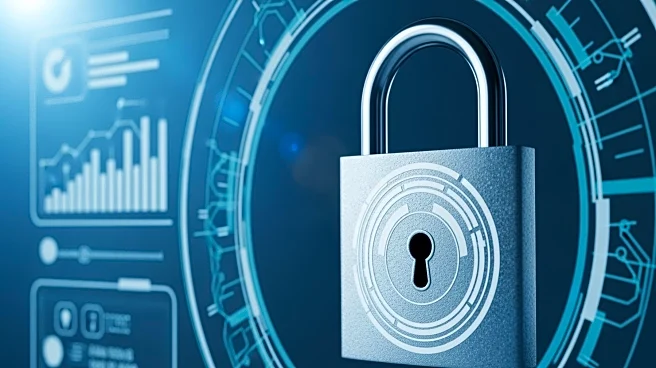What's Happening?
Darktrace has conducted an investigation into a ransomware attack linked to DragonForce, a Ransomware-as-a-Service (RaaS) platform. The attack targeted the manufacturing industry, with initial signs of compromise detected in August 2025. The attackers
used network scans and brute-force attempts to gain access, eventually leading to data exfiltration and file encryption. Despite early detection by Darktrace, the lack of an Autonomous Response capability allowed the attack to progress. The attackers used common methods such as phishing and exploitation of known vulnerabilities to infiltrate the network. Data was exfiltrated to a malicious IP address associated with a hosting service in Russia, and ransomware was deployed, encrypting files and dropping ransom notes.
Why It's Important?
This incident highlights the growing threat of Ransomware-as-a-Service platforms like DragonForce, which enable a wide range of affiliates to conduct sophisticated attacks. The manufacturing sector, a critical component of the U.S. economy, is particularly vulnerable to such disruptions. The attack underscores the importance of robust cybersecurity measures, including autonomous response capabilities, to prevent data breaches and financial losses. The involvement of a Russian-hosted IP address also raises concerns about international cybersecurity threats and the need for global cooperation in combating cybercrime.
What's Next?
Organizations in the manufacturing sector and beyond may need to reassess their cybersecurity strategies, particularly the implementation of autonomous response systems to mitigate similar threats. There may be increased scrutiny and regulatory pressure on companies to enhance their cybersecurity defenses. Additionally, international collaboration may be necessary to address the cross-border nature of such cyber threats, potentially leading to new policies or agreements aimed at curbing ransomware activities.
Beyond the Headlines
The rise of RaaS platforms like DragonForce represents a shift in the cyber threat landscape, where even less sophisticated actors can launch significant attacks. This democratization of cybercrime tools poses a challenge for security teams, who must now prepare for a wider array of tactics and techniques. The ethical implications of such platforms, which profit from enabling criminal activities, may also prompt discussions on the responsibilities of technology providers in preventing misuse of their services.














